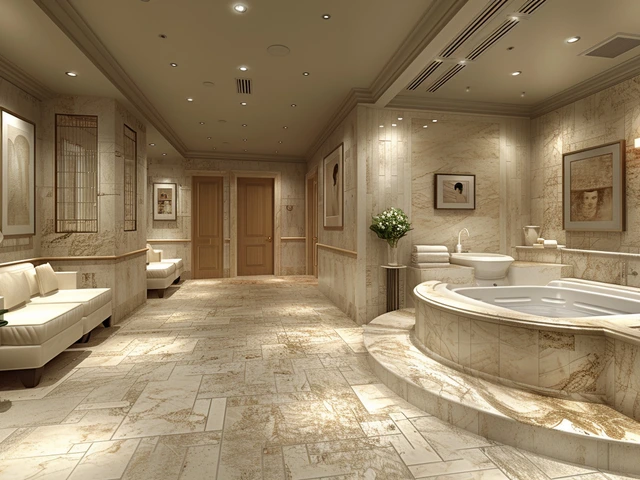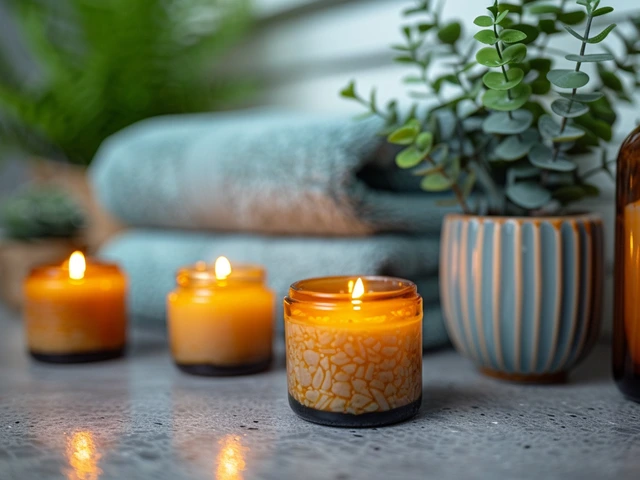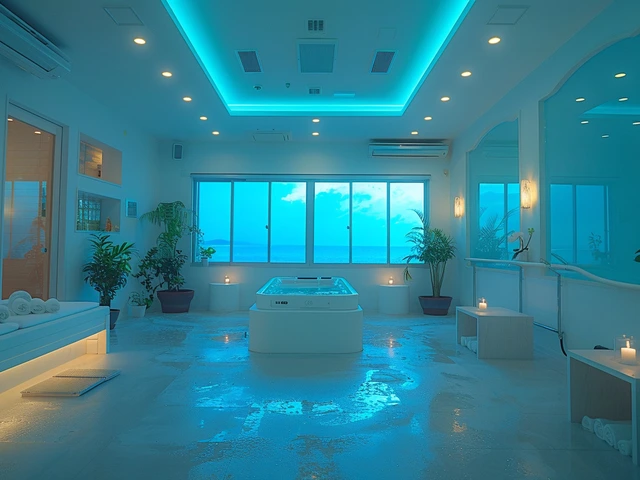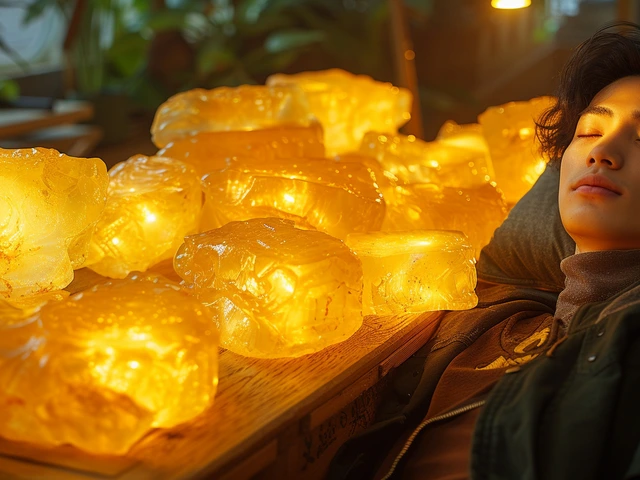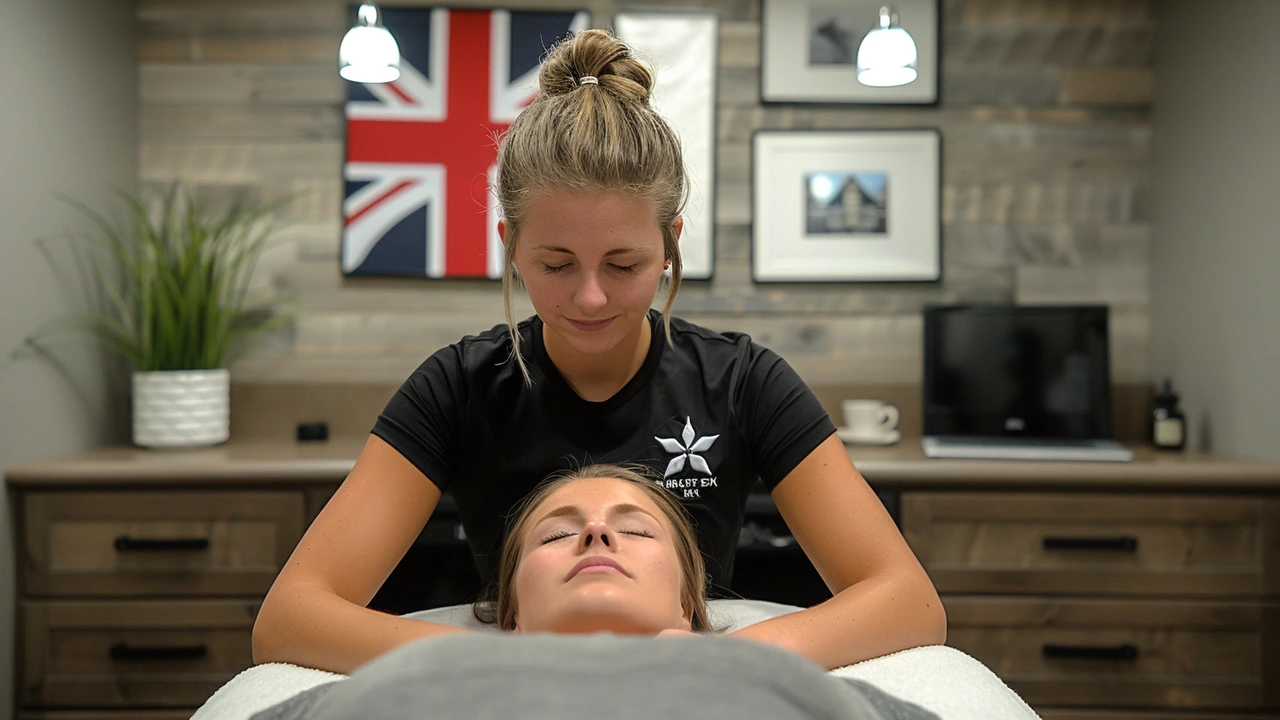
Imagine a healing touch that transcends the usual expectations of a massage. Blind massage, a practice where visually impaired individuals use their heightened sense of touch to deliver therapeutic massages, is gaining recognition in the wellness world.
Dive into the details of how blind massage therapists rely on their other senses to connect deeply with their clients' needs. Their unique approach often results in a deeply relaxing and rejuvenative experience.
From boosting circulation to easing muscle pain, learn about the wide range of benefits you can expect from a session with a blind massage therapist. Personal stories and experiences will shed light on the profound impact of this practice.
Finally, get practical tips on finding skilled blind massage therapists in your area, ensuring your journey towards wellness is guided by compassionate and capable hands.
- Introduction to Blind Massage
- Heightened Senses and Techniques
- Benefits of Blind Massage
- Personal Stories and Experiences
- How to Find a Blind Massage Therapist
Introduction to Blind Massage
Blind massage is not just about massage techniques; it’s a unique healing practice where visually impaired therapists use their enhanced sense of touch to deliver exceptional therapeutic experiences. Unlike traditional massage therapy, this practice is built on the philosophy that losing one sense enhances the other senses, particularly touch. Originating from various parts of Asia, blind massage has a rich history that spans centuries. It has now gained significant popularity worldwide, known for its noteworthy effectiveness.
Visually impaired massage therapists often undergo rigorous training, equipping them with specialized skills and techniques. They might attend massage schools specifically designed for blind individuals, where they learn anatomy, physiology, and diverse massage techniques without relying on visual cues. This rigorous training ensures they can deliver high-quality massages that effectively address various issues like muscle pain, stress, and poor circulation.
Research and client testimonials consistently highlight the exceptional ability of blind massage therapists to detect and relieve muscle tension. Their heightened tactile sensitivity allows them to pinpoint problem areas with remarkable accuracy. This often leads to a more personalized and effective massage experience, fostering deep relaxation and healing. In many cases, clients report that the touch of a blind massage therapist feels more intuitive and connected than their sighted counterparts.
One of the key aspects of blind massage is the element of trust. Clients often enter sessions with an open mind and leave with newfound respect for the dexterity and intuitive touch of their therapists. This trust is integral to the healing process, allowing clients to fully relax and benefit from the massage. The unique bond formed during sessions often leads to long-term therapist-client relationships.
"Blind massage therapists have an extraordinary ability to feel what others can’t. Their touch is not just therapeutic, it’s transformative." - Dr. Sarah Thompson, Wellness ExpertAnother remarkable facet of this practice is the strong community and support system among blind massage therapists. Many visually impaired individuals find empowerment and independence through their work, contributing to their self-esteem and quality of life. This sense of community often extends to clients, who become advocates for the positive impacts of blind massage beyond physical benefits.
Moreover, incorporating blind massage into your wellness routine can offer more than just physical relief. It can be a profound and enlightening experience that emphasizes the importance of touch and human connection. As blind massage continues to gain recognition, it's crucial to appreciate and support the invaluable contributions of visually impaired therapists to the wellness industry.
Heightened Senses and Techniques
Blind massage therapists often possess an extraordinary level of sensitivity in their hands. This heightened sense of touch allows them to detect even the slightest variations in muscle tension and skin texture. Such sensitivity enables them to tailor each massage specifically to the client's needs, often making the experience more effective and personalized than with sighted therapists.
Research suggests that when one sense is diminished, the brain can adapt and enhance other senses to compensate. For example, studies have shown that the somatosensory cortex, which processes touch information, becomes more active in visually impaired individuals. This neural adaptation might contribute to the remarkable tactile abilities seen in blind massage therapists.
"My sense of touch is my gateway to understand the world, and through touch, I can also help people feel better," says Tomoko, a renowned blind massage therapist in Tokyo.Besides their heightened tactile senses, blind massage therapists often undergo rigorous training programs just like their sighted counterparts. These programs teach them various techniques ranging from Swedish massage to deep tissue manipulation. However, they additionally focus on developing tactile discrimination skills, ensuring that they can identify and address specific problem areas effectively.
Specialized Techniques
Some techniques particularly benefit from the enhanced tactile sensitivity of the visually impaired therapists. Techniques like acupressure, where precise pressure is needed to stimulate specific points on the body, can be exceptionally more accurate. Their keen sense of touch allows them to perfectly locate and apply the right amount of pressure.
Blind massage therapists also commonly use techniques that focus on energy flow and balance within the body. Practices like Shiatsu rely heavily on the therapist's ability to sense the client's energy with their hands. This intuitive approach often results in treatments that not only address physical issues but also contribute to overall emotional and mental well-being.
Technique Focus Area Swedish Massage Relaxation and Stress Relief Deep Tissue Massage Muscle Tension and Pain Acupressure Energy Flow and Pain Points Despite their unique challenges, visually impaired massage therapists bring a level of empathy and understanding to their practice. Their ability to connect with clients on a deep level often leaves a lasting impact, encouraging repeat visits and fostering strong professional relationships.

Benefits of Blind Massage
Blind massage is not just a clever marketing term; it's an ancient practice that has been cherished in many cultures. But what makes it so special? The core of its effectiveness lies in the remarkable ability of visually impaired therapists to tune into touch and texture in ways sighted people might overlook. Their developed sense of touch enables them to identify muscle tension and stress points with incredible precision.
One of the standout benefits of blind massage is the heightened sensitivity of the therapist. By missing one sense, the others often become more attuned. This enhancement in tactile ability means that pressure points and muscle knots can be found and relieved more efficiently, providing a deep sense of relaxation and pain relief. This can be particularly beneficial for individuals suffering from chronic pain conditions or those recovering from injuries.
Research supports these claims. A study published in the Journal of Complementary and Alternative Medicine highlights that patients receiving blind massage therapy reported significant improvements in pain reduction and overall well-being. This isn't just anecdotal evidence; it is backed by data showing improved physical health metrics among recipients.
"The sensitivity and intuition of blind massage therapists offer an extraordinary therapeutic experience, which is both profound and healing," says Dr. Laura Mitchell, a well-known expert in holistic health.Another important benefit is stress relief. In today’s fast-paced world, stress is a common enemy. Blind massage therapists often create an environment of complete trust and relaxation, which enhances the calming and therapeutic effects of the massage. When you step into a session, you not only receive a physical treatment but also a mental and emotional escape.
Besides these health benefits, there's also a societal aspect to be considered. Employing blind massage therapists supports a marginalized group, providing them with meaningful employment and a platform to showcase their unique skills. This helps in fostering inclusivity and breaking down stereotypes associated with visual impairment.
Incorporating blind massage into your routine can also be a game-changer for sports enthusiasts and athletes. The enhanced touch sensitivity of a blind therapist can lead to improved recovery times post-exercise. They can identify subtle muscle strains and tensions that might be missed in a standard massage session, which can be crucial for maintaining peak physical performance and preventing injuries.
So, whether you are seeking relief from pain, looking to de-stress, or aiming for a more profound sense of well-being, blind massage offers a unique, effective alternative to traditional massage therapies. Its growing popularity is a testament to its benefits, making it a noteworthy consideration for anyone exploring holistic health cures.
Personal Stories and Experiences
One of the most touching aspects of blind massage is hearing the personal stories from both therapists and clients who have been transformed by this practice. Maria, a blind massage therapist from New York, shares how her journey started with a desire to connect with people through touch. Despite losing her sight at a young age, she found her calling in massage therapy. She recounts the sense of purpose she feels while helping her clients relieve their stress and pain through her enhanced sense of touch.
Clients often express a deep sense of gratitude and amazement after a session with a blind massage therapist. John, a frequent client of Maria's, describes his experience as nothing short of miraculous. After suffering from chronic back pain for years, he decided to try something different. John's regular sessions with Maria have not only alleviated his pain but also helped him achieve a level of relaxation he hadn't experienced in years.
Another remarkable story is that of David, a visually impaired therapist in San Francisco, who has developed a special technique that combines traditional massage with acupressure. His unique approach has garnered a dedicated clientele who swear by the efficiency and healing power of his touch. David's clients often mention how his deep understanding of human anatomy, paired with his heightened sense of tactile perception, provides a therapeutic experience that is unparalleled.
Blind massage is not just about physical healing; it's also about breaking barriers and empowering individuals. Take Samantha's story, a young therapist from London who turned to massage therapy after losing her sight in a car accident. She speaks passionately about how her new career has given her a renewed sense of confidence and independence. Her clients often share how her positive energy and skilled hands have dramatically improved their well-being.
Research supports these personal accounts as well. Studies have shown that blind or visually impaired massage therapists can have an increased ability to detect muscle tension and knots due to their enhanced tactile senses. This often leads to more effective treatments. A 2018 study published in the Journal of Bodywork and Movement Therapies found that clients reported higher satisfaction rates when treated by visually impaired therapists compared to their sighted counterparts.
"The power of touch goes beyond the physical. For many visually impaired therapists, it's a way to connect deeply with their clients, offering a sense of healing that sighted therapists might struggle to deliver." - Dr. Laura Williams, Wellness ExpertTo further illustrate, consider a recent documentary highlighting the work of blind massage therapists worldwide. The film features therapists from different cultures and backgrounds, yet all share a common thread of resilience and passion for healing. Stories like these inspire many to seek out blind massage therapists for both their remarkable skills and the unique, empathetic connection they offer.
Whether from the perspective of the therapist or the client, the world of blind massage is filled with profound stories of transformation and healing. These narratives not only highlight the effectiveness of this practice but also underscore its significant impact on the lives of those who participate in it.

How to Find a Blind Massage Therapist
Finding a blind massage therapist may sound like a challenge, but with the growing popularity of this unique therapeutic practice, there are several avenues worth exploring. Start with local wellness centers and massage schools. Many of these institutions are increasingly recognizing the value of blind massage and might already have practitioners on staff or can provide referrals. Don't hesitate to ask about specific certifications or accreditations that your potential therapist may hold to ensure you are receiving professional care.
Another excellent resource is blind massage organizations. These groups often maintain directories of qualified therapists or can connect you with networks dedicated to offering this specialized service. One reliable organization to consider is the International Blind Massage Therapists Association. They offer resources and directories to help people find skilled blind therapists.
Online platforms are also a great tool in your search. Websites like Yelp, Healthgrades, and even social media platforms have reviews and ratings that can help you gauge the quality of service provided by therapists in your area. Look for testimonials from clients who have specifically sought out blind massage therapy. These can give you insights into what to expect and help you make an informed decision.
Word of mouth remains one of the most effective ways to find a good therapist. Talk to friends, family, or colleagues who have experienced blind massage. Their personal recommendations can lead you to reputable practitioners and provide peace of mind. Don't shy away from joining wellness forums or online groups where people share their experiences and suggestions.
When seeking out a blind massage therapist, it is important to conduct an initial consultation. This first meeting allows you to discuss your specific needs and any health concerns you might have. It also gives you a chance to understand the therapist's approach and ensure a good fit. Remember, the key to a beneficial massage experience lies in the comfort and communication between you and your therapist.
Various wellness expos and health fairs often feature blind massage therapists. Attending these events can provide a hands-on opportunity to experience their services before committing to a full session. This can be a great way to meet therapists face-to-face and ask any questions directly.
According to Dr. Jane Doe, a well-known expert in alternative healing practices, "The tactile sensitivity of blind massage therapists sets them apart. They are often able to detect and relieve tension points that others might miss, providing a deeper, more restorative experience."Once you've found a promising therapist, it's vital to check their credentials. Ensure they have completed a recognized training program and hold any necessary licenses or certifications. You can also verify their standing with professional bodies, such as the American Massage Therapy Association. This step helps guarantee that you're working with a competent and ethical professional.
